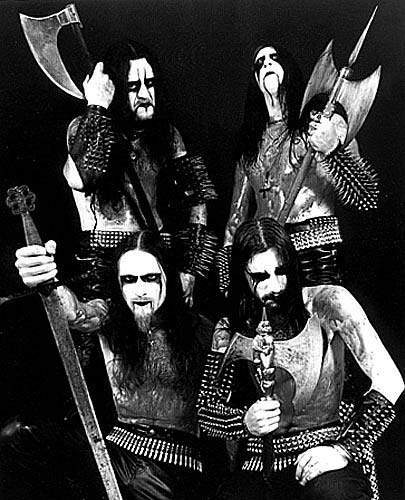
(Earlier this week, Metal Injection published a discourse on The 10 Most Lethal Weapons In Black Metal. In the introduction to the article, the author alluded to the reasons why certain kinds of weaponry have been associated with the genre. Now we get the author’s full explanation — a Part 1, if you will, to the Part 2 piece that appeared at Metal Injection. At NCS, you know the prolific author as Rev. Will. In the course of his research, he consulted members of Noctem, Sigh, and Edge of Paradise, as well as the Vegan Black Metal Chef.)
Funnily enough, whenever black metal weaponry floats to the surface of the perpetually random sea of thoughts slushing about in my head, the next thing that invariably comes to mind is the “bling-bling” of hip-hop culture. Before the elitists out there start coming down on me with the wrath of Satan’s cheeseburger, consider for a moment the following comparison.
Now, I am not insinuating that there is a musical similarity between both genres. What I would like to point out is that just as bling-bling is the Statue of Liberty of hip-hop, black metal weaponry is very much an iconic part of black metal that serves as the first graphic reference for most people’s memory banks when they try to recollect what they can of the grim metal sub-genre (someone ought to give it a catchy name too, maybe “cling-clang”). Just as many hip-hop artistes are famous within the mainstream music circle for their overly-flashy jewelry, black metal musicians are infamous within the underground music community for their ostentatious weapons as well.
Over time, both sets of accessories have evolved from merely being elements of sub-genre attire into cultural movements of their own. Bling-bling and cling-clang are both usually made of metal, but that’s where the similarity between both cultural movements stops. Unsurprisingly, for a sub-genre and cultural movement as pessimistic and misanthropic as black metal, its proliferation in the early ‘90s even had the occasional political motive—something much of hip-hop has left far behind since its early days. Continue reading »
